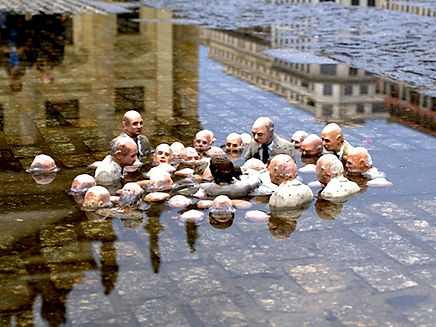Climate Solutions
In this project, students will explore the dangers of climate change for our biosphere and create workable solutions to present to global leaders. They will explore climate change through the angles of science, art, and activism on their path towards understanding how climate change may affect their futures and what they can do to turn the tide.
Master Plan & Timeline
Driving Question
What are the main dangers of climate change, why is it happening, and how can we most effectively use art and strategy to slow it down?
Learning Objectives
Skills:
-
Creativity
-
Collaboration
-
Communication
-
Critical Thinking
-
Presentation / Public Speaking skills
-
Debating
-
Strategic Planning
-
Artistic Expression
Content
-
EEn 2.2.2: Compare the various methods humans use to acquire traditional energy sources (such as peat, coal, oil, natural gas, nuclear fission, and wood).
-
EEn 2.3.1: Explain how water is an energy agent (currents and heat transfer).
-
EEn 2.5.1: Summarize the structure and composition of our atmosphere.
-
EEn 2.6.1: Differentiate between weather and climate.
-
EEn 2.6.2: Explain changes in global climate due to natural processes.
-
EEn 2.6.3: Analyze the impacts that human activities have on global climate change (such as burning hydrocarbons, greenhouse effect, and deforestation).
-
EEn 2.6.4: Attribute changes in Earth systems to global climate change (temperature change, changes in pH of ocean, sea level changes, etc.).
-
EEn 2.7.3: Explain how human activities impact the biosphere.
-
EEn 2.8.1: Evaluate alternative energy technologies for use in North Carolina.

Benchmarks
Entry Event

Students will calculate their Carbon Footprint using the Environmental Protection Agency’s online calculator. They will then watch a series of videos and analyze art related to climate change.
After participating, they will answer the following questions:
-
Did your carbon footprint surprise you?
-
What concerns do you have about climate change?
-
What do you think is the most effective way to make progress on slowing down climate change?
-
What type of art do you think is most powerful in changing attitudes about climate change (Powerful speakers, poetry, sculpture, paintings, music, etc.)?
Labs
Students will participate in two separate labs to learn about the mechanisms of climate change and using alternative energy in practical ways to reduce the carbon footprint of our energy usage. See the links below for lab handouts and information:

Dangers & Solutions Debate
-
Prepare to debate the question:
-
What is the biggest problem that climate change will cause and what are the best solutions to stop it?
-
-
Research the following issues for the debate:
-
Ocean Acidification
-
Sea Level Rise
-
Desertification
-
Natural Disaster Intensity
-
Mass Extinctions
-
Alternative Energy / Energy Conservation
-
Carbon Taxes
-
Carbon Emissions
-
Reforestation
-
Waste Reduction
-
Dietary Changes
-
-
Take 1-3 pages of notes from your research
-
Provide a bibliography of your sources
-
Participate fully in the debate through respectfully arguing your position and using evidence to back up your opinion

FINAL PRODUCT 1: Activist Art
Students will create a piece of artwork in their choice of media (visual, poem, music, performance) that will send a strong message about climate change and inspire people to act.
All products must contain the following:
-
A creative approach to the problem
-
High quality craftsmanship on the final product
-
Obvious collaboration of group members
-
A compelling message that makes people think about climate change and impels them to take action
-
Has a clear call-to-action (i.e. they know what you're asking them to do when they see your work.)

FINAL PRODUCT 2: Global Summit

See my rubric
Students will deliver a presentation with a handout and strategic plan to a “Global Summit of World Leaders,” that will outline a detailed, workable solution for slowing climate change.
All products must contain the following:
-
Trendlines on global temperature and carbon emissions showing predictions based on a slope equation
-
Recommendations on realistic energy policies countries could adopt to slow climate change
-
An overview of the dangers facing us if we don’t act
-
An emotional appeal to the leaders
Presentations must answer these questions:
-
How expensive are your solutions and what are their economic impacts?
-
What types of energy production would you promote and which types would you phase out?
-
What are the predicted humanitarian, ecological, and economic effects of climate change on the USA, China, and Europe?
-
What is your strategy and timeline for actions you are recommending? Use this format.
-
Include at least 5 strategies in the form of well-researched SMART goals. Prioritize them in order of importance and be prepared to defend them.
-
What are the main causes of climate change?
-
How do we use the line equation or other mathematical concepts to make predictions about climate change?


